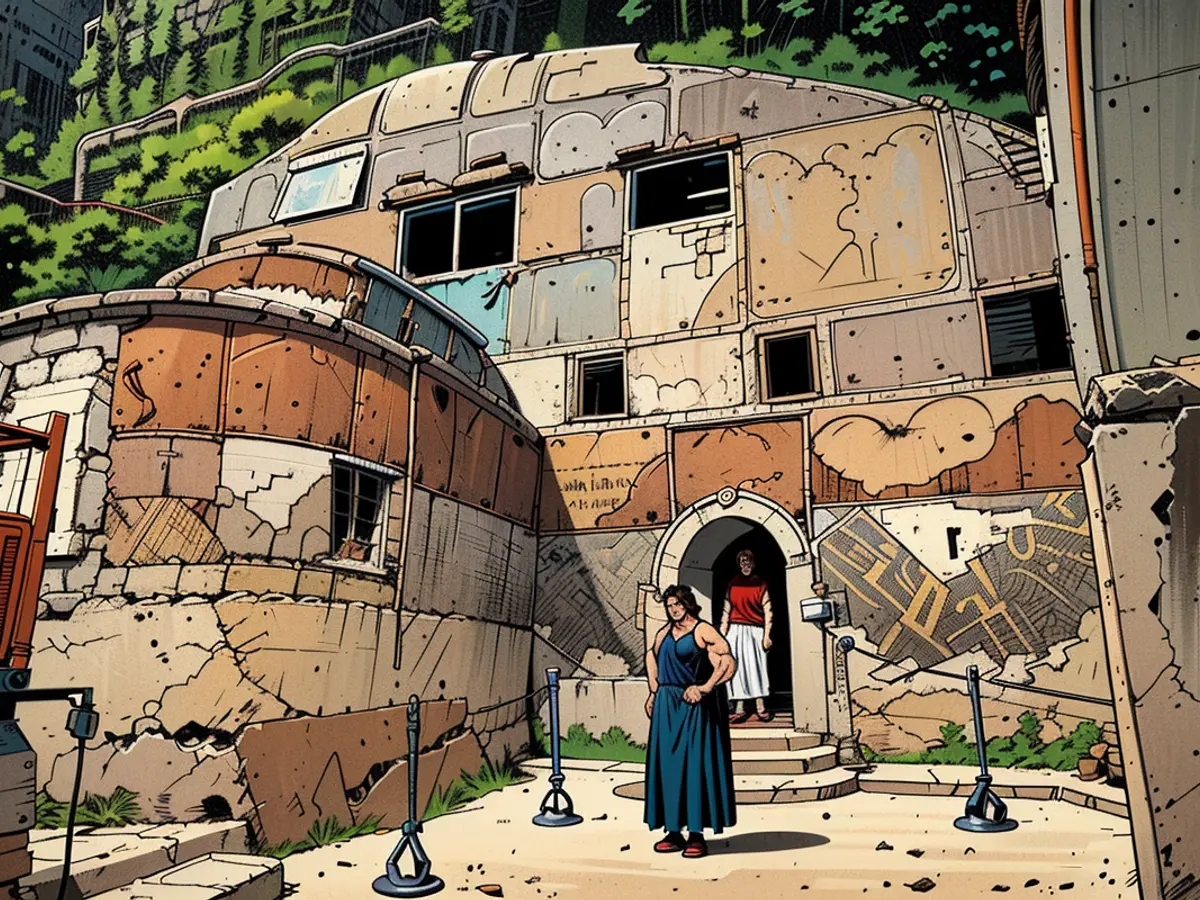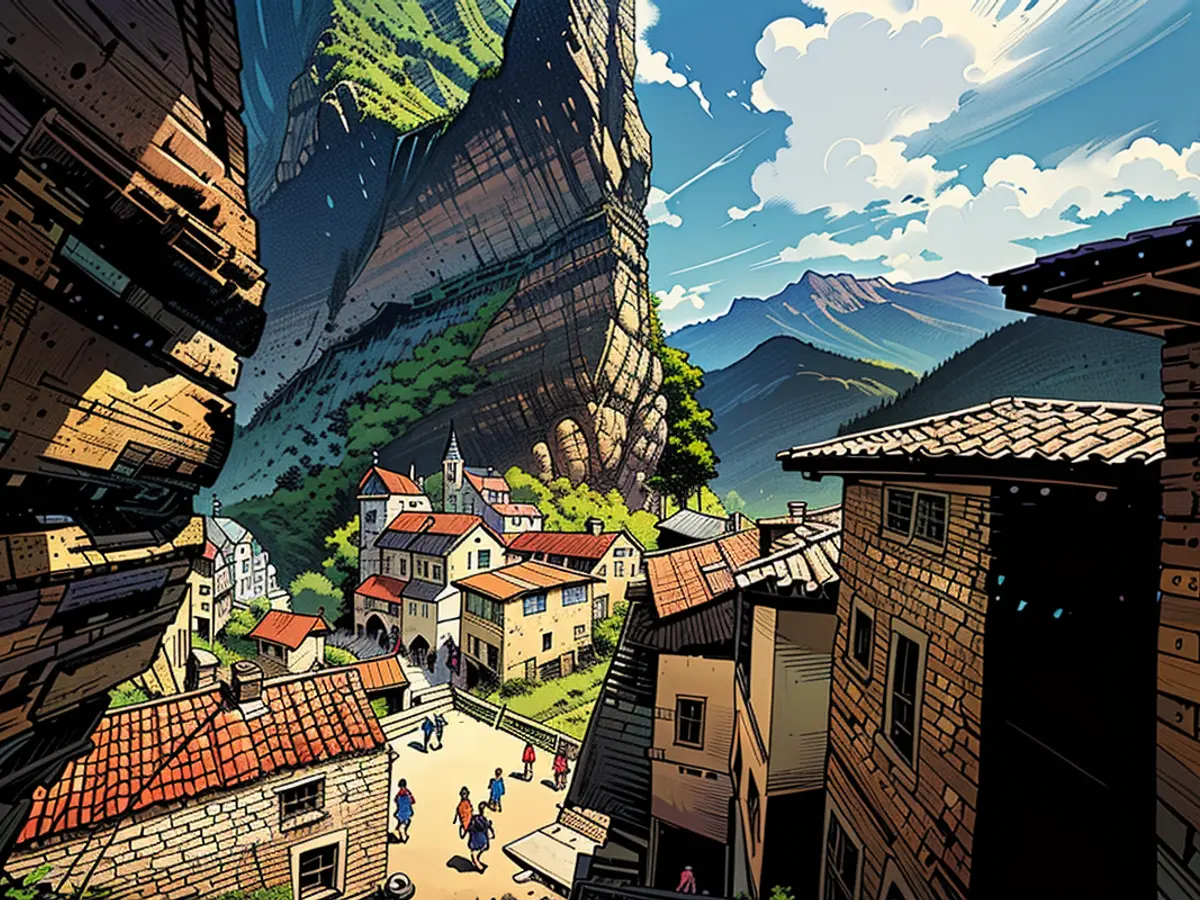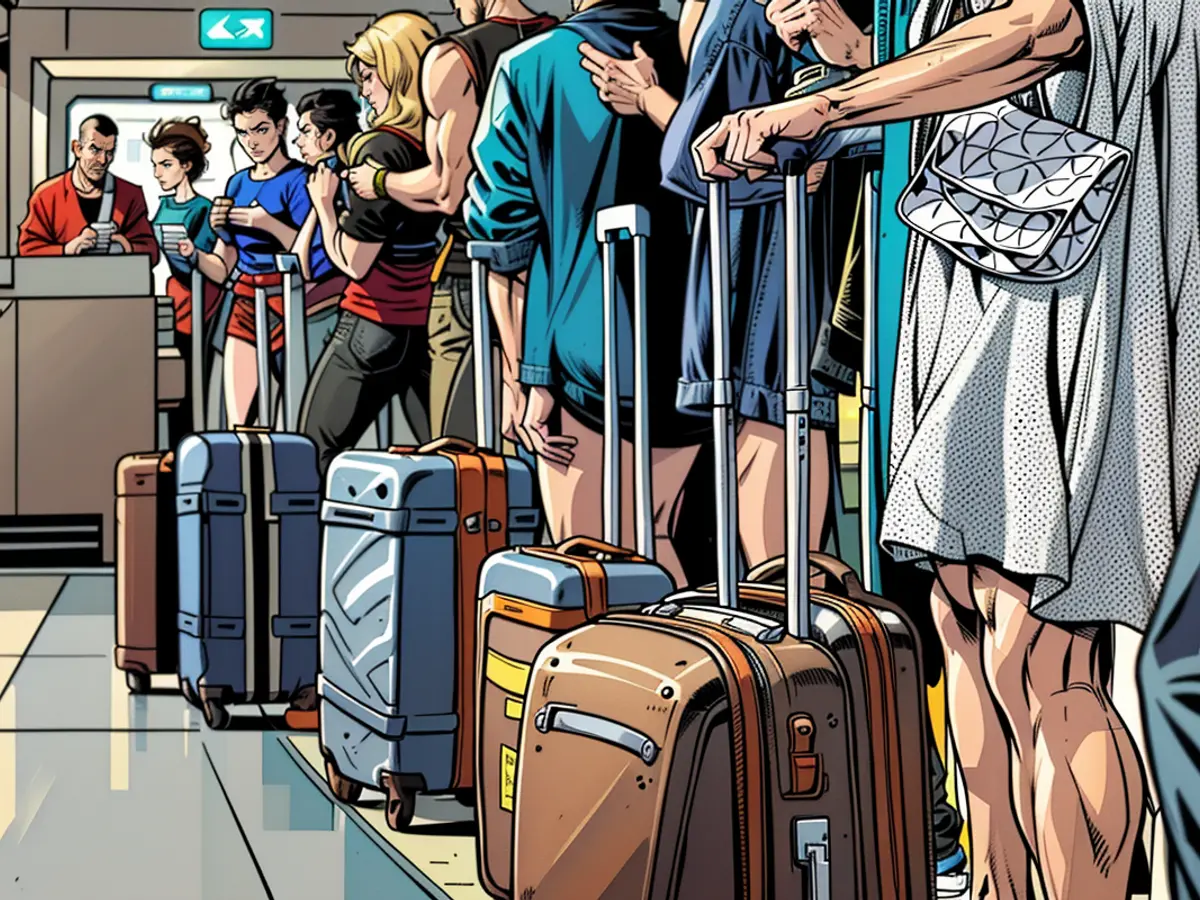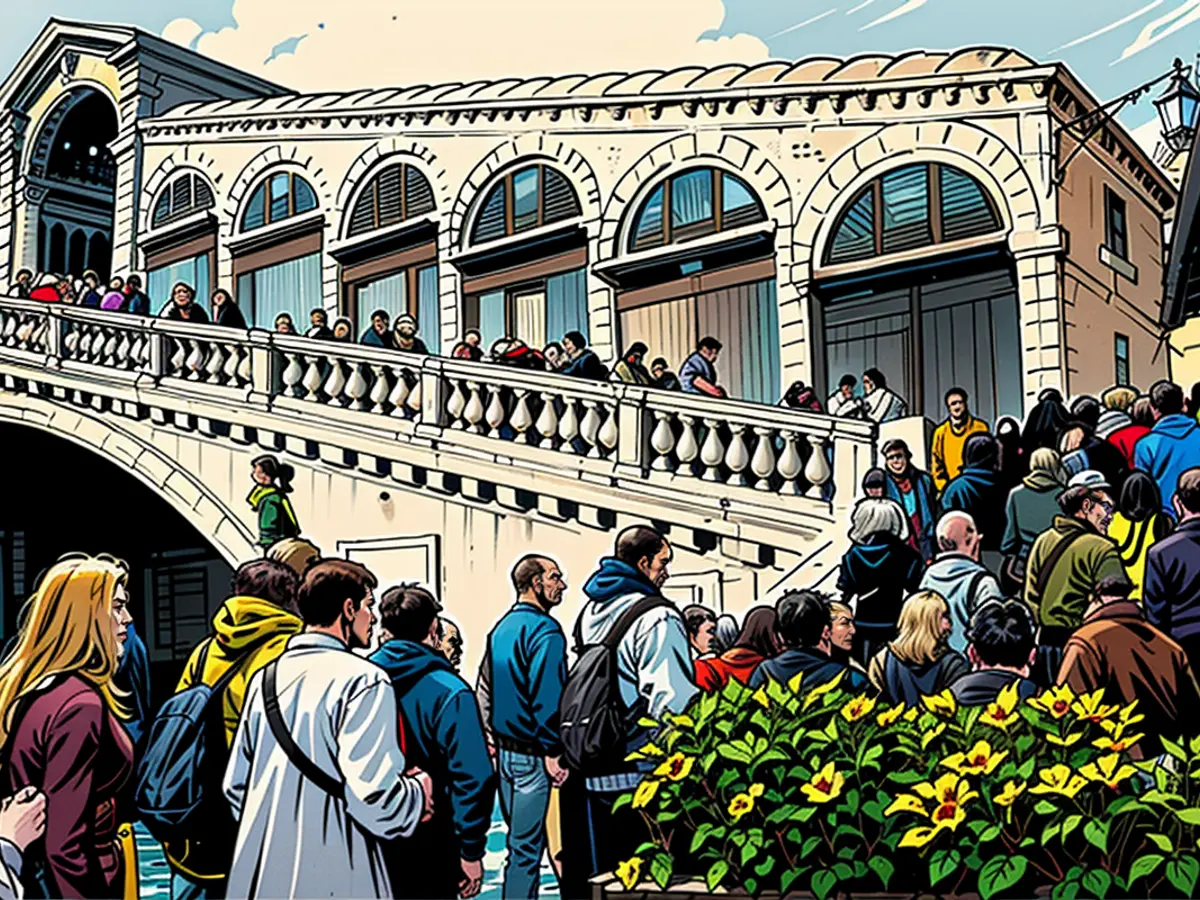The venerable monastery perched precariously on the cliffside's edge
Since its establishment in the 4th century CE by early Christian settlers on the Black Sea coast, the shrine has witnessed the transformation of the Roman Empire into the Byzantine era, the rise of the Ottomans, the Turkish struggle for independence following World War I, decades of vandalism and neglect, and a remarkable rebirth in modern times.
A more captivating spectacle than Sümela's tumultuous past is its current appearance – chapels, courtyards, libraries, living quarters, a bell tower, an aqueduct, and a sacred spring nestled precariously on a rocky ledge over 900 feet (275 meters) above a forested river valley in the Pontic Alps.
Each day, thousands of visitors – some religious pilgrims, but more enticed by the stunning early Christian frescoes and architecture that seem to defy gravity – trek along a cobblestone path to the monastery. Another attraction is Sümela's potential inclusion on UNESCO's World Heritage list.
Now serving as a state museum rather than an active religious community, the monastery has undergone extensive restoration to ensure its safety for tourism and to repair damage caused by fires, treasure hunters, vandals, and rowdy tourists.
"We've always had issues with falling rocks," Levent Alniak, manager of museums and historic sites for Trabzon province, admits. "To protect the structures and safeguard visitors, we hired expert mountain climbers to secure the cliff." Suspended mid-air, these climbers used steel cables and massive metal stakes to install steel mesh netting and barriers on the towering rockface above the monastery.
The ongoing restoration uncovered unexpected treasures, such as a hidden tunnel leading to an undiscovered chapel that could have served as an observation post to protect the monastery. Inside the tiny church, archaeologists discovered vivid frescoes depicting heaven and hell, life and death.
Rebirth of the Frescoes
The restoration of the monastery's exquisite frescoes continues, a multi-year project requiring meticulous, labor-intensive work by restoration experts. During the dry summer season, visitors can observe these experts cleaning graffiti and removing damage inflicted on the monastery between the 1920s and 1960s.
"For years, there was no control here, and there was a lot of vandalism," says restorer Senol Aktaş, taking a break from his work on an 18th-century fresco of the Virgin Mary conversing with an angel on the facade of Sümela's impressive Rock Church. "We're trying to remove graffiti by painting over it with a style and colors similar to what the original artists used."
Sümela towers nearly 1,000 feet above the valley below. While the exterior frescoes are impressive, they pale in comparison to the more ancient images inside. Behind its façade, the church disappears into a large cave filled with vibrant images from the 13th century. Large portraits of Jesus and the Virgin Mary look down from the ceiling, while the walls depict angels, apostles, and saints, including a dramatic depiction of St. Ignatius being torn apart by lions in a Roman arena.
The eyes are missing from many lower frescoes, those easily reached by human hands. Some claim they were intentionally defaced by Muslims.
However, Öznur Doksöz, who's been guiding visitors to Sümela since it opened to the public in the 1980s, presents another theory. "The Virgin Mary is a holy person for Muslims as well. So, local people came and made marks on the frescoes, especially the eyes, believing the paint chips would bless them. We don't know if this story is true, but that's what people say."
Sümela's Legendary and Historical Foundations
Despite no conclusive evidence, the monastery's origin story remains uncertain – a blend of fact and myth.
According to the legend, Sümela's roots trace back to 386 CE and a divine revelation experienced by Greek monks Barnabas and Sophronios. They were led to the remote area by a vision in which the Virgin Mary informed them about a painting by Luke the Apostle hidden within the Pontic Alps. The monks eventually discovered the sacred relic – a dark image of the Virgin Mary and Baby Jesus, which they named Panagia Soumela – in the cave that would later house the Rock Church.
The cave remained a place of pilgrimage for hundreds of years. It wasn't until the 13th century that the monastery, as we know it today, was established by Orthodox monks during a period in which the last Christian kingdom ruled the region. The monastery flourished under the Ottomans, who captured the area in 1461.

Even as Muslims, the Ottomans granted their subjects surprising religious freedoms – as long as they remained loyal to the emperor.
"Sometimes they'd convert a church into a mosque, like Hagia Sofia in Istanbul," Alniak explains. "But most of the time, they allowed Christians to continue practicing their religion." The sultans even supported some of the more important Christian sites. "The sultans considered Sümela a sacred place and helped the monastery by providing donations and additional land," he adds.
Sümela was renowned for attracting Christian and Muslim pilgrims, and served as an active Greek Orthodox monastery, till the early 20th century. After the collapse of the Ottoman Empire following World War I, the ensuing civil war between the Turkish and Greek residents resulted in a 1923 population exchange between the Asian and European parts of the empire.
Many Greeks residing in the Pontic Alps and adjacent Black Sea coast chose to migrate to Greece, including the monks of Sümela Monastery. Concerned about being robbed during their voyage to Greece, the monks concealed the monastery's valuables at concealed locations within the Altindere Valley, intending to reclaim them at a later time.
The deserted monastery quickly became a haven for treasure seekers in pursuit of these invaluable artifacts. Ultimately, the Panagia Soumela was retrieved by the monks and is now housed within the Nea Sumela Monastery in northern Greece. Regrettably, some relics were smuggled abroad and can now be found in various museums or private collections worldwide.
By the 1970s, Turkey's Ministry of Culture and Tourism initiated efforts to preserve and restore Sümela as a national treasure. Over the succeeding decades, improvements were made to make it more accessible for tourists and pilgrims.
A pivotal turning point in the monastery's revival occurred on August 15, 2010, on the Feast Day of the Assumption of the Virgin Mary, when the Archbishop of Constantinople conducted the initial Orthodox worship service at Sümela in 88 years. This tradition has since been repeated annually on August 15, while faithful are allowed to pray throughout the year in the monastery's chapels.
Touring Sümela today
Sümela Monastery is nestled within Altındere Valley National Park, about an hour's drive south of Trabzon, a popular Black Sea coast resort city in Turkey.
Visitors have the option of self-driving or joining guided van and minibus tours to the monastery, organized by travel agencies in Trabzon. From the parking lot, shuttle buses transport visitors to the base of a steep path, culminating in steps that lead to the monastery entrance.
The entry fee is 20 euros or 60 Turkish lira. The monastery is open from 8 a.m. to 7 p.m. between June and September, and 8 a.m. to 5 p.m. between October and May. A short documentary about the restoration is screened in one of the old monk's cells. Anticipate spending one to two hours exploring the site.
Located just outside the entry gate are a modest shop selling snacks and souvenirs, vending machines, outdoor seating, and restrooms.
Visitors are advised to wear durable footwear and dress according to the weather, taking into account the possibility of rain during the warmer months and snow during the winter.
Trabzon is approximately 13 hours away by car from Istanbul, but only a two-hour flight. Turkish Airlines operates 10 daily flights between Istanbul and Trabzon, as well as return journeys.
Coşandere village offers accommodation closest to the monastery, including the three-star Sümela Holiday Hotel. Trabzon provides a wider selection of overnight options, such as the seaside Ramada Plaza and the hilltop Radisson Blu.

With the option of daily flights from Istanbul, exploring Sümela Monastery has become an easy travel plan for many tourists. (travel)
The captivating frescoes in Sümela Monastery have undergone a meticulous restoration process, requiring experts to remove decades-old damage and graffiti. (travel)
Read also:
- Fear of escalation in the Middle East: US Secretary of State Blinken travels to the region again
- Government circles: US Secretary of State Blinken to travel to Middle East again
- Bridging days 2024: How you can double your vacation this year
- Germany has wanderlust: how tour operators and airlines are looking ahead to the next travel year








